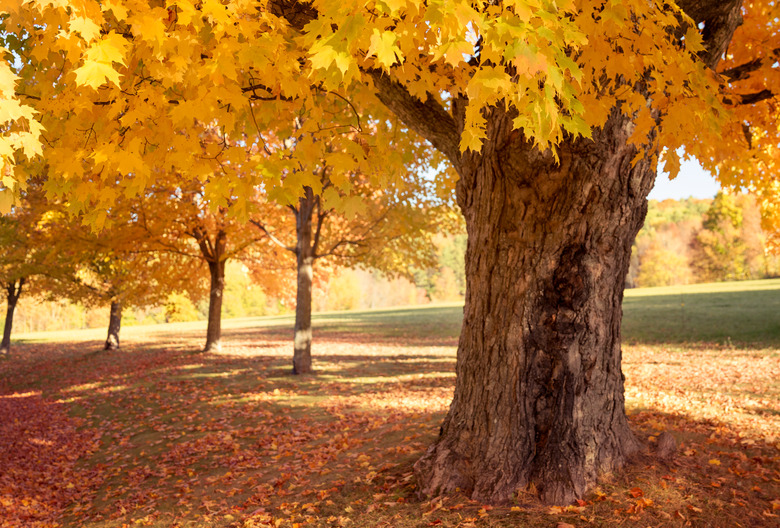Maple Tree Vs. Oak Tree
Species of maple (Acer spp.) and oak (Quercus spp.) abound in the United States, so you may want to know the difference between a maple tree vs. oak tree before planting a tree. These deciduous trees, and in the case of some maple species, shrubs, appear regularly in garden and landscaping environments, as well as in naturally wooded areas.
Differences between species of oak and maple trees range from variations in taxonomic, or scientific, classification, to common uses and problems with each and the general size of the species. These trees grow throughout the United States and Canada.
Taxonomic Differences Between Trees
Taxonomic Differences Between Trees
All true maple trees and shrubs belong to the Sapindaceae plant family and the Acer genus. True oak trees belong to the Fagaceae plant family and the Quercus genus. All species of maple and oak are vascular plants, angiosperms, and dicots.
Maple vs. Oak Uses
Maple vs. Oak Uses
Maple tree vs. oak tree uses are slightly different based on their features. Maples are so diverse that their use hinges on the species. Common uses of maple trees include screening or ornamental species, patio trees, hedge and border accents and container growth. Maples also provide commercial use when their trunks are tapped to yield sap that makes syrup.
Oak tree uses include shade trees, street or municipal trees and focal specimens on large grounds such as public parks. Oak species don't make good trees for small home grounds, though small species of maples do.
Species Size Differences
Species Size Differences
When comparing the size of a maple tree vs. oak tree, maple trees exhibit a much broader size range than do oaks. Some maple species are actually shrubs or bushes, and prove small enough to grow in containers. These plants reach mature heights as short as 8 feet. Other species of maple reach heights of 100 feet.
Small oak trees reach heights of 20 to 30 feet, while large oak trees reach mature heights of 50 to 100 feet. Oak trees exhibit significant lateral growth as well; the branches and roots grow far from the center of the tree, more so than maple species of comparable size. Because of this, oak trees shouldn't be grown in confined spaces or near foundations.
Common Tree Problems
Common Tree Problems
Maples and oaks both appear on lists of species to which Japanese beetles are most attracted. Other pests commonly affecting maple and oak species include aphids, borers and scale insects. Common diseases in both maple and oak include leaf spots and bacterial leaf rot. Other common maple diseases include tar spot, anthracnose, canker and collar rot. Small or soft-wooded maple trees may break in ice storms.
A common disease in oak not present in maple is oak wilt. Large oak trees are big enough to be impervious to most problems, such that even when infested or infected these trees sometimes don't experience a decline in health.
Additional Species Information
Additional Species Information
Maple species are noted for their foliage, making them a good choice for ornamental landscape trees. Species such as Japanese maple (Acer palmatum, zones 5-8) exhibit fiery red leaves during the fall. Cultivars and hybrid varieties such as Bloodgood Japanese maple bear similarly ostentatious foliage in variations of red and purple. Oak trees attract small animals such as squirrels, opossums and birds, which feed on the tree and live in its spacious canopy.
